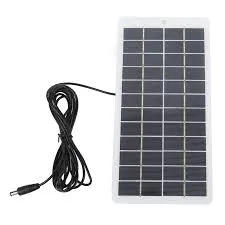Understanding Solar Panel Sizes and Their Impact on Installation Efficiency
Understanding Solar Panel Dimensions A Key to Efficient Energy Solutions
As the world increasingly shifts towards renewable energy, solar power has become a popular choice for both residential and commercial applications. One of the crucial aspects to consider when selecting a solar panel system is the dimensions of the panels. Understanding solar panel dimensions is essential, as they significantly impact efficiency, installation, and overall energy production.
What are Solar Panel Dimensions?
Solar panel dimensions refer to the physical size of the solar panels, which can vary based on the technology used and the intended application. The most common types of solar panels include monocrystalline, polycrystalline, and thin-film. Each type exhibits different dimensions and efficiencies.
Typical monocrystalline solar panels measure about 65 inches by 39 inches (approximately 1.65 meters by 1 meter) and have a thickness of around 1.4 inches (3.5 centimeters). Meanwhile, polycrystalline panels can vary slightly but are often similar in size. Thin-film panels, on the other hand, can come in various shapes and sizes, as they are made from flexible materials.
Importance of Panel Dimensions
1. Space Availability One of the first considerations when installing solar panels is the available rooftop or ground space. Larger panels generate more electricity but may require more installation space. A homeowner with limited roof area might prefer smaller dimensions that allow for more flexible configurations without compromising efficiency.
2. Energy Output The dimensions of a solar panel directly influence its energy output. Generally, larger panels can accommodate more solar cells, which can lead to increased efficiency and energy production. However, performance also depends on the technology and design of the panel, so a smaller, high-efficiency panel may outperform a larger, less efficient one.
solar panel dimensions

3. Weight and Structural Integrity Solar panels can be heavy. Understanding the dimensions and weight is essential for ensuring that the mounting structure can support them. This is particularly relevant for older buildings or those made of less durable materials. An incorrect evaluation of the structural integrity could lead to costly repairs or pose safety risks.
4. Installation Considerations The dimensions of solar panels can affect installation processes. Larger panels may complicate installation, especially in tight spaces or on irregularly shaped roofs. Conversely, smaller panels might allow for more straightforward installations in confined areas.
5. Aesthetic Factors For many homeowners, the aesthetics of solar panels are also a concern. Larger panels may dominate the roof's appearance, while smaller ones can blend more seamlessly into the architectural design. Consumers should consider how the dimensions will affect the overall look of their property.
Choosing the Right Dimensions
When selecting solar panels, it is essential to balance the dimensions with energy needs and space considerations. This often involves calculating the total energy consumption and determining how much energy can be generated based on the panel dimensions and local sunlight conditions. Engaging with a professional solar installer can provide valuable insights and guidance tailored to individual needs.
Additionally, advancements in solar technology have led to the creation of high-efficiency panels that produce more energy despite their smaller size. These innovations can help homeowners maximize energy output while minimizing space requirements.
Conclusion
Understanding solar panel dimensions is vital for anyone considering a solar energy system. It influences not only the efficiency and output of the solar power installation but also aspects such as space, weight, installation processes, and aesthetics. By carefully evaluating these factors and consulting with professionals, consumers can make informed decisions that align with their energy needs, budget, and space availability. As solar technology continues to evolve, the options available in terms of dimensions and efficiency will only expand, providing even more opportunities for harnessing the power of the sun.
-
Unlocking Energy Freedom with the Off Grid Solar InverterNewsJun.06,2025
-
Unlock More Solar Power with a High-Efficiency Bifacial Solar PanelNewsJun.06,2025
-
Power Your Future with High-Efficiency Monocrystalline Solar PanelsNewsJun.06,2025
-
Next-Gen Solar Power Starts with Micro Solar InvertersNewsJun.06,2025
-
Harnessing Peak Efficiency with the On Grid Solar InverterNewsJun.06,2025
-
Discover Unmatched Efficiency with the Latest String Solar InverterNewsJun.06,2025







